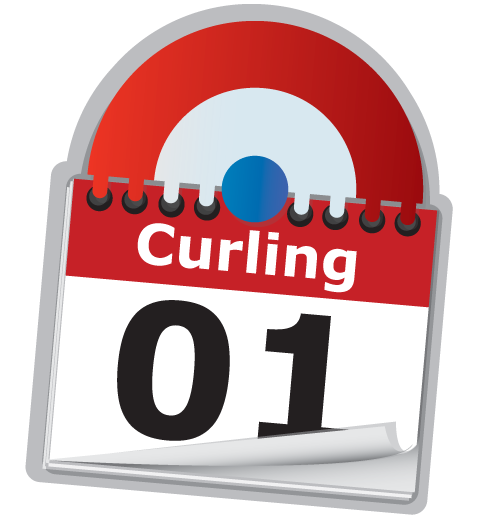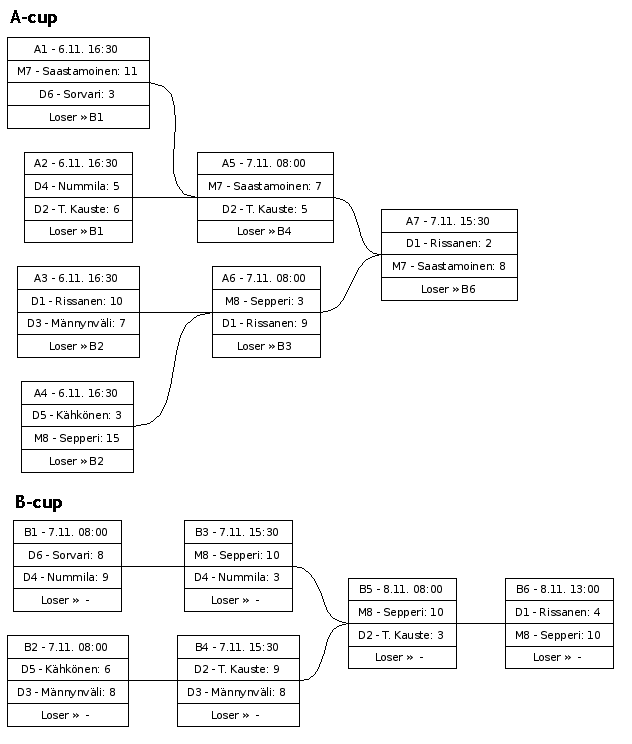A single-elimination tournament, also called a knockout, cup or sudden death tournament, is a type of elimination tournament where the loser of each match is immediately eliminated from winning the championship or first prize in the event.
The round in which only eight remain at the start it is generally called the quarter-final round; this is followed by the semi-final round in which only four are left, the two winners of which then meet in the final.
Double knockout
A double-elimination tournament is a type of elimination tournament competition in which a participant ceases to be eligible to win the tournament's championship upon having lost two games or matches. It stands in contrast to a single-elimination tournament, in which only one defeat results in elimination.
A double-elimination tournament is broken into two sets of brackets, the Winners Bracket and Losers Bracket (W and L Brackets for short; also sometimes Upper Bracket and Lower Bracket or A-cup and B-cup, respectively). After the first round, the winners proceed into the W Bracket and the losers proceed into the L Bracket. The W Bracket is conducted in the same manner as a single-elimination tournament, except of course that the losers of each round "drop down" into the L Bracket.
In the attached image you can see an example of double knockout system from the Finnish Championships League tryouts in 2009.
- All teams started in the A-cup
- From the first loss a team drops to the B-cup
- In 2009 there were two open places in the championships league so the winner of the A-cup (Saastamoinen) and the winner of the B-cup (Sepperi) didn't play a final. If there had been only one open place, these two teams would have played a final.
Triple knockout
Triple knockout is very popular system in competitive curling tournaments.
- All teams start from the A-cup
- From the first loss a team drops to the B-cup and from the second loss to the C-cup
- The third loss means that a team is eliminated from winning the tournament. However, sometimes classification games can be played between these teams to determine final rankings.
- The winner of the A-cup, the winner of the B-cup and two teams from the C-cup advance to semi-finals.
The number of teams
The number of teams is typically equal to a power of 2 (8, 16, 32, etc) so that there are an even number of competitors at every round.
In cases where the number of competitive entities at the start of the tournament is not a power of two, some competitors may receive a bye in the first round, which entitles these competitors to advance to the second round automatically without playing. Often, these byes will be awarded to the highest-rated competitors in the event as a reward for some previous accomplishment. This system is used for example in Kolibris Cup where there are 24 teams. 16 teams start from the first round of the A-cup and the winners of these games meet the best ranked 8 teams in the second round.
Pros and cons of a triple knockout system
Pros
- A triple knockout system is more suitable to competitive tournaments than a Schenkel system because only wins count.
- A triple knockout system doesn't take as many games as round-robin tournament would.
Cons
- Some teams will lose their first three games and will only have those three games in the whole tournament if additional classification games are not played.
- Some teams (especially those in the C-cup) will have many games during the same day.

